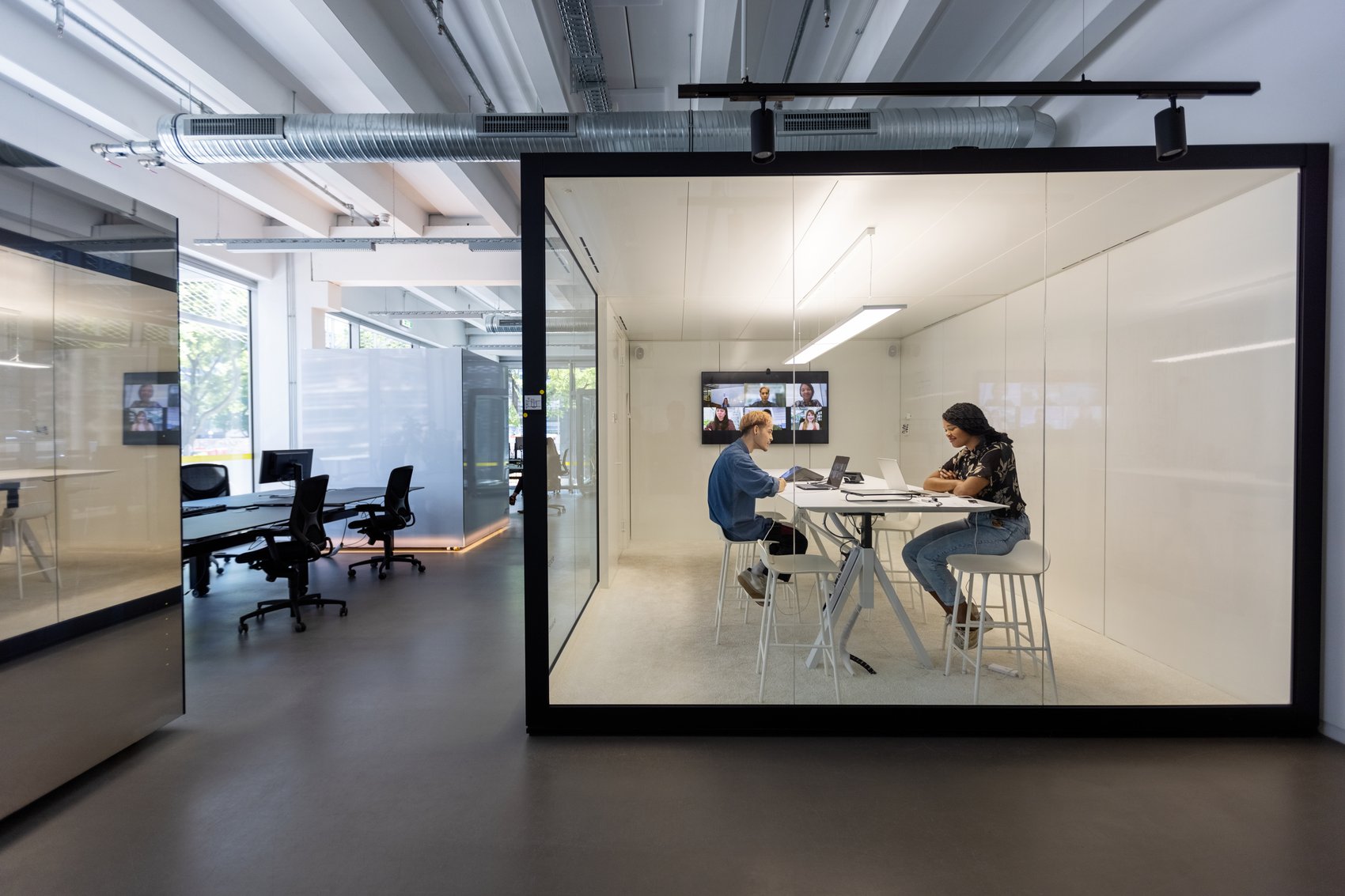Want a better company culture in 2023? Here's what 33,000 tech workers say works best.

Brenna Washington
Product Marketing Manager
Teams that are performance-oriented, with high degrees of cooperation, shared risks, and novel approaches outperform all others, according to our research.
New year, new you, new company culture?
There are so many reasons why people are changing companies and careers these days. One thing that continues to come up, even — or especially — post-COVID is how culture continues to be a major reason why people inevitably choose to stay at or leave their companies.
Over the past eight years, we’ve surveyed more than 33,000 tech practitioners, and the 2022 Accelerate State of DevOps report from the Google Cloud DORA team confirms again that company culture continues to drive, and drag, organizational performance. Specifically, the report found that a generative culture led to increased organizational performance. Professor Ron Westrum coined the term “generative culture” to describe those that are performance-oriented, with high degrees of cooperation, where risks are shared and novel approaches rewarded.
Culture is also a key concern not just in terms of the enjoyment we find at work — where many of us spend most of our days — but also the impact it has on performance, productivity, and output. Consider one of the most sensitive areas for businesses in our increasingly digital economy: security.
“This year’s report dug deep on security, and found that the biggest predictor of an organization's application-development security practices was cultural, not technical” said Claire Peters, a research lead at DORA. “With security top of mind for every organization, we found that teams with high trust and low-blame cultures that focused on performance were significantly more likely to successfully adopt effective security practices.”


Organizational culture, just like the culture at large, is more fluid and multifaceted than people often think. Both cultures are driven by tastes, trends, and especially influencers and leaders, meaning culture really is something organizations can change, and change more quickly and with more impact than they might expect.
The question is how to achieve the change you want, and in a direction that benefits employees and the organization. Here’s three big takeaways from the DevOps report that can help inspire your company culture in 2023:
1. Increase flexibility, especially during times of high stress
Burnout is a word we hear all too often now that the lines between work and life are so often blurred. New approaches to hybrid work have brought greater flexibility, as well as some amount of uncertainty. Our research from the Accelerate report shows that flexible, predictable work models are crucial, and generally lead to decreases in employee burnout and increases in employees’ likelihood of recommending their team as a good place to work.
Not only that, but our findings from this year showed that rigid work arrangements increase the likelihood of employee burnout by 30%.
Teams with above-average workplace flexibility have 243% better operational performance and 275% higher software delivery performance than more rigid teams. This underscores the value of flexibility, as it not only offers workers the time to focus on meaningful work but also because it leads to healthier, happier employees.
It’s important, then, to find a way to allow your employees to choose between work arrangements that are in-person, hybrid, or fully remote to best fit their unique needs. And flexible work environments require more than just location options. Additional initiatives and structure to foster the aforementioned inclusiveness inherent in a generative culture are just as necessary.
For example, calendars that provide visibility into working locations; inclusive team activities; and virtual spaces that make communication easy and accessible to everyone are all ways to strengthen connections and morale. An employee-centric approach has direct tangible benefits for your organization such as higher organizational performance.
2. Reduce employee churn, which can create a downward spiral
In our report, we also examined whether higher team churn impacts organizational performance.
Constant churn can impact productivity and morale as new team members need time to on-board and get up to speed with new team and organizational dynamics. At the same time, existing employees will also be forced to adapt to changes in their workload and team dynamics both when a colleague leaves and when their replacement arrives. Existing workers may also wonder if they're making a mistake by staying and start exploring their own prospects elsewhere.
We found that stable teams — defined as ones whose composition hadn’t changed much over the last 12 months — were more likely to exist within high-performing organizations.


The research showed that a generative culture, a stable team, and a flexible work arrangement are associated with people being more likely to recommend their team to others. Employees recommend their teams when they feel valued for their contributions, risks are shared between the team, and there is high cooperation among team members.
One major factor for leaving a team is the level of psychological safety on the team. High-performing organizations are more likely to have a culture that encourages employees to take calculated and moderate risks without fear of negative consequences, according to survey responses. Without a safe environment for employees to express their feelings, chances are low that they will feel comfortable staying on the team or ever recommend their team to a colleague.
3. Demonstrate good work/life balance
Burnout has been recognized by the World Health Organization as a condition that results from unmanaged chronic workplace stress, and it is more than just being tired. One thing that has not changed is the increasingly negative impacts of burnout that we see, such as exhaustion, cynicism, and inefficacy at work; research shows that stressful jobs can be as bad for physical health as secondhand smoke or obesity.
“‘The dream team’ has a generative culture, a stable team, support, and offers employees flexible work arrangements,” Derek Debillis, another DORA research lead, explained. “Without being too judgmental, I would pick working on this team over other types of teams. I’d venture that many others would, too, as these dream teams have the highest level of support from leadership to focus on their needs. Even if that means a temporary dip in productivity overall, that support leads to long-term increases in operational success.”
Teams with high trust and low-blame cultures that focused on performance were significantly more likely to successfully adopt effective security practices.
Claire Peters
It can be hard for employees to feel comfortable taking a mental health day or taking time off to recover after a taxing product launch cycle when they don’t see their managers and executives encouraging this behavior, discussing it, or, best of all, demonstrating it themselves.
That’s why it’s important to thank employees for all the hard work they have been doing and encourage them to spend time decompressing so they can come back as their best selves for the next project. Specifically, make it clear that your employees should not sacrifice family time or their self-care in order for them to be successful at work.
Stable teams, stronger security
It might seem trite to suggest the new year is a good time to reboot company culture, especially as the wider culture is full of resolutions right now. Yet the reality is, having wrapped up another hectic end-of-year period, followed by a forced break courtesy of the holiday season, and now the hard pivot to new-year strategy and planning sessions, January really does offer an opportunity to reset standards.
We understand that it can be hard to know where to start when improving your culture, so we recommend that organizations seek to first understand their employees’ experiences and subsequently invest resources in addressing culture-related issues.
To give an example, investing in resources that provide an open feedback loop between your organization and your employees will begin to establish clear communication, so workers feel they are being heard and can see changes made from their suggestions. Making culture a collaborative effort between the company and employees is the only way to ensure the culture is working for everyone in the organization. Plus, regardless of industry, good culture and clear communication are essential to drive organizational success.
There are also more benefits that come with improving culture that may be less obvious. One of the most surprising findings from the research remains the benefits to security found in teams with generative cultures, and how they were significantly more likely to have broadly established security practices.
The full Accelerate State of DevOps Report goes even deeper into the connection between culture and security, and how they go hand-in-hand. You can read it to learn more and find additional insights for building a better culture not only this year but well into the future.


